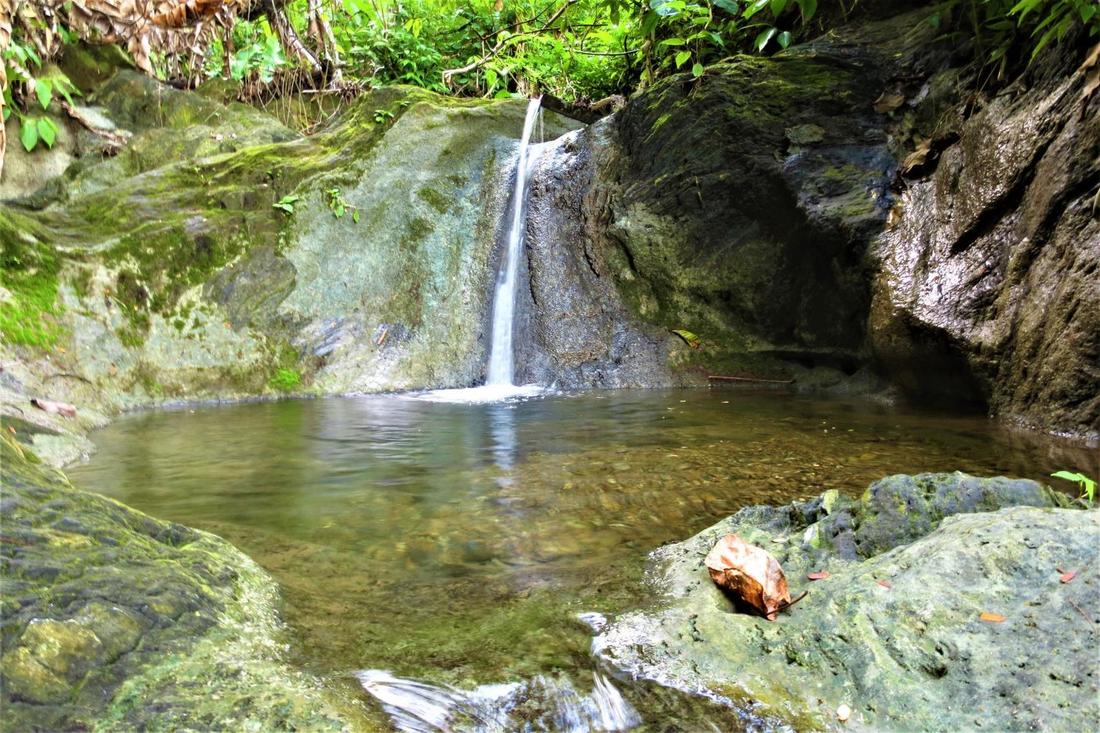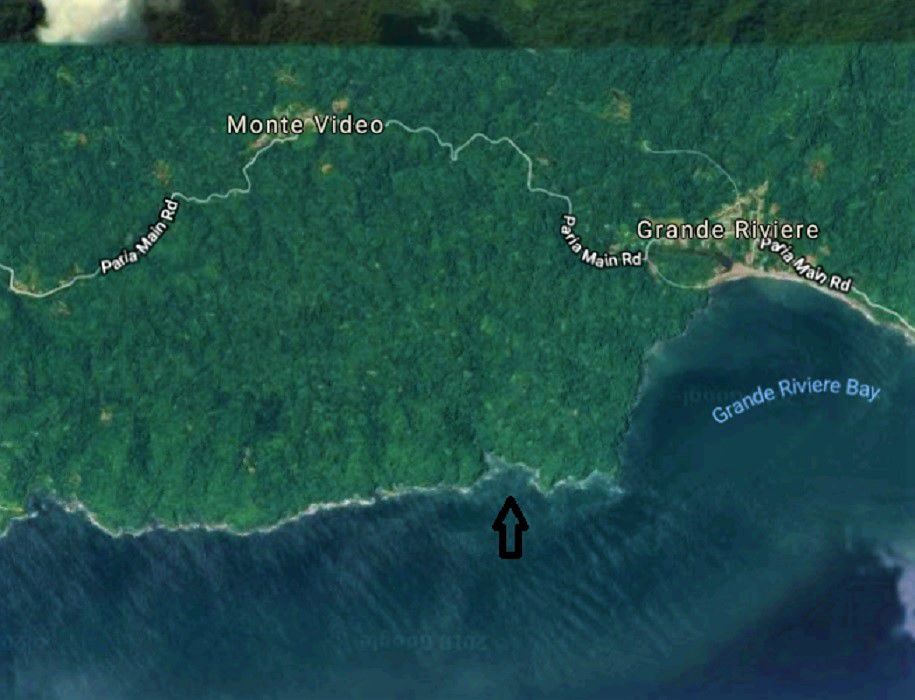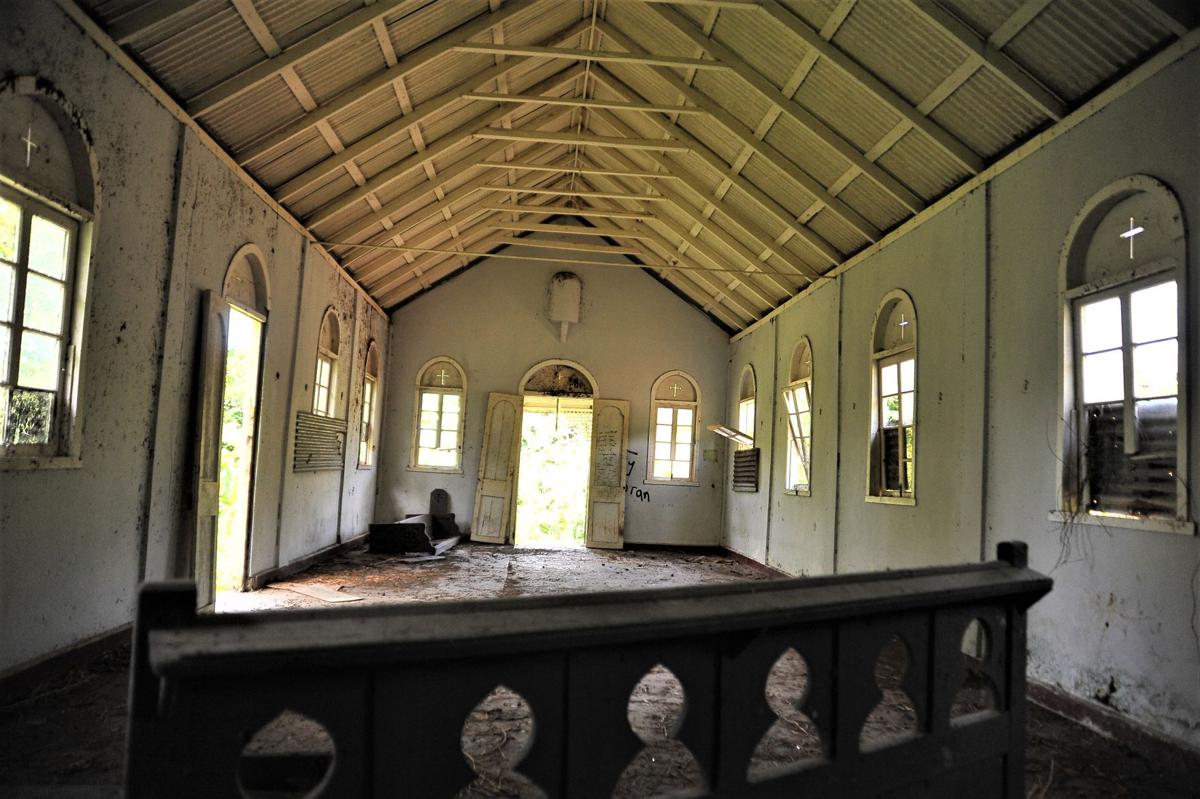|
A cascade on the way to the abandoned village of Manantial THERE was once a village in 19th century Trinidad called Manantial. It sat in a valley opening to the north coast. The homes were week-long projects of wood and carat leaves. No one was rich. No one was poor. The hunters most always returned with meat, and the fishing was easy. Plantain and provisions grew like weeds. The weed grew too, plentiful and potent. The mountain ravines were the washtubs and bathing pools of the people. And the spring that gave the place its Spanish name, provided clean water. So people ate well. If they survived malaria, yellow fever and dysentery, some lived long. It was a village born to support the cocoa crop. The residents were Venezuelan migrants, descendants of the African enslaved and what blood remained of the decimated First Peoples. They worked estates that thrived in perfect conditions, and lived and planted subsistence gardens on rented lands. To get to the closest ‘town’ meant a three kilometre walk or donkey ride under a rainforest canopy to the main road passing through the inland mountain village of Monte Video. Then there was an even longer journey to Toco, where the bridal trail ended, and where the round-the-island steam ship made a call. For some of the people here, entire lives were spent along a ten kilometre stretch of this coast. So you would think the people of Manantial could not get further away from it all. But the Christian missionaries found them. The Catholics and Anglicans were already competing for souls on the north coast when the Moravian Church elders arrived. According to the historical records, unsaved Moravians were discovered in Trinidad, so the Church sent someone over from Barbados to investigate. The Church found hundreds on Barbadian-born Moravians living godlessly in Port of Spain and fornicating in unwed squalor in Ste Madeleine, where the sugar factory employed many. And in Manantial, it was reported that: “heathen Chinese conducted a rum-shop (while) in some of the villages there were many Mahometans (Muslims), and many of the natives were still addicted to old African vices and superstitions”. The arrow points to the location of the abandoned village So the missionaries came, and stations were founded in Rosehill, Port of Spain, Chaguanas, Belmont, Ste Madeleine and Manzanilla. And in 1896, enough people donated time, money and material to build and consecrated a Sunday school and Chapel in a prominent spot in Manantial, a village whose name was corrupted by the locals to be called “Manantao”. In attendance that day were thirty adults and twenty-five children. A house would be built for the teacher and catechist and the school was recognised by the Colonial Government, with the salaries of the teachers paid for by the Board of Education. As a result, Manantial’s dead no longer had to be carted off to the Catholic graveyards at Mission or Matelot. They could be churched and buried in the place of their toil. But despite the State funding, the Moravian Church couldn’t get enough people or their tithes to expand. Some moved away to work on other plantations. Their children had to labour in the fields and did not often attend. Estate owners raised the rental prices and those who couldn’t pay were evicted. The abandoned church in Monte Video An epidemic of dysentery killed some and sickened the young. And worshippers in the nearby village of L’anse Noire built their own Moravian Church to avoid having to foot it to Manantial.
By 1915, the Manantial church closed, beginning a long decline. We know much of this history because of the memory of Isadore Tenia. Source: Richard Charran, the Daily Express, Oct 2018
0 Comments
Leave a Reply. |
T&T news blogThe intent of this blog is to bring some news from home and other fun items. If you enjoy what you read, please leave us a comment.. Archives
July 2025
Categories
All
|




 RSS Feed
RSS Feed